Mount Browne
Houses within 15km of this house
Displaying 91 houses.
Houses within 15km of Mount Browne
Displaying 91 houses.
| House name | Description | |
|---|---|---|
| Barbersfort | Originally a Bermingham residence, sold to the Ruttledges in 1816 and recorded as the seat of Mrs. Rutledge in 1894. Burnt down in the 1920s apparently by accident. A new house was built on part of the site which adjoins the old farmyard. Now the home of the Dunlevy family. |

|
| Moyveela Lodge | The original Moyveela Castle was the home of the Browne family before their move to Mount Hazel. In 1786, Wilson writes that Moyveela was the seat of Andrew Browne. At the time of Griffith's Valuation a large portion of the townland was part of the Vandeleur estate and was leased to James Kineen. He occupied a property which later became known as Moyveela Lodge which is still extant. Over 300 acres as well as two caretakers' houses were in the possession of Andrew Browne whose address in the 1870s is still given as Moyveela and Mount Hazel. | |
| Monivea | An O'Kelly tower house, acquired by the ffrenches in the early 17th century, who made additions in the 18th century. Held in fee by Robert French at the time of Griffith's Valuation when it was valued at £40. In 1894 Slater refers to it as the seat of Acheson French. In 1938 it was bequeathed by Kathleen French to the State as a home for artists, subsequently demolished and now only the original tower remains. A mausoleum, modelled on the tower house and constructed at the end of the nineteenth century, is located in the adjacent woodland. |

|
| Ballymore | Wilson mentions the seat of Mr. Rathbourne near Craughwell in 1786 though he does not name the house. In 1837 Lewis recorded Ballymore as the seat of R. Rathbourne, who continued to reside there until the 1880s. Griffith's Valuation shows that Richard Rathbourne held it from the Clanricarde estate. This may be the house noted by Slater as part of Lord Clanmorris's estate in 1894. Ballymore is still extant and occupied together with an extensive range of outbuildings. |
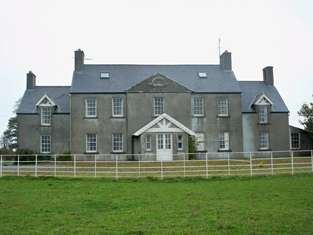
|
| Moyode | The seat of the Persse estate for many years. At the time of Griffith's Valuation it was the seat of Burton Persse. In 1894 Slater refers to it as the seat of De Brugh Persse. In 1906 it was owned by Lord Ardilaun and was valued at almost £73.Only some ruins of Moyode Castle remain although elements of the stable yard still exist. |

|
| Kilcornan | In 1814 Kilcornan House was the residence of T. & C. Redington. Later, in 1837, Lewis recorded it as the seat of T. Redington. At the time of Griffith's Valuation Thomas Redington was the owner of the property, then valued at £100. In 1894 Slater referred to it as the residence of C.T. Redington. In 1906 it was the property of Anne Redington. Kilcornan House is still standing and now forms part of the Brothers of Charity services complex located in the grounds. |

|
| Abbert | In 1786, Wilson refers to Abbert as the seat of Mr. Blakeney. Occupied by David Watson Ruttledge at the time of Griffith's Valuation when the buildings were valued at £35. Slater refers to Abbert as the seat of John Blakeney in 1894. A new house has been built at the site but the ruins of the original outbuildings still exist. |
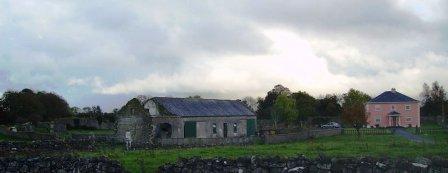
|
| Hollypark | In 1814 Hollypark was the seat of Pierce Blake and at the time of Griffith's Valuation the property of Peter Blake when it was valued at £20. In 1894, Slater referred to it as the seat of Col. M.P. Blake. In 1906 Maria C. White held the mansion house at Hollypark. It is still extant and occupied. |
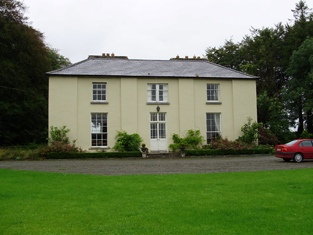
|
| Bookeen Glebe | Burton Persse was leasing this house to Rev. Robert Graham at the time of Griffith's Valuation. In the nineteenth century, the house was used as the residence of the incumbent at Bookeen Church. It was later purchased by the Aitken family who had served as Land Agents for the Clancarty estate at Coorheen, outside Loughrea. The house has been renovated and is extant and occupied. |

|
| Lavally | Wilson refes to Lavally as the seat of Mr. Lynch in 1786. In 1837 Lavally is recorded by Lewis as the seat of T. Lynch. It was still occupied by him at the time of Griffith's Valuation in 1856 when it was valued at £20. By 1906 Delia Mullin is recorded as the owner. Lavally House is still extant and undergoing renovation. |
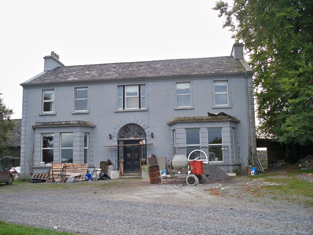
|
| Rockfield House | Melvin states that throughout the 18th and 19th centuries the house at Rockfield was occupied by Burkes, Brownes, Blakes and Concanons. At the time of Griffith's Valuation it was occupied by Patrick J. Blake and was valued at £26. In 1837 Lewis recorded it as the home of M. Browne. Wilson, writing in 1786, refers to it as the seat of Michael Browne. In 1906 it was owned by Richard A. Nugent when it was valued at £27. The Encumbered and Landed Estates Court sale notices give the impression that the house was sometimes known as Rockville. Though the house no longer survives the gate lodges are still occupied. |

|
| Stoneleigh | The house in Laghtphillip townland, part of the Lynch estate, was leased to James Stanley in 1855. In 1906 the house was owned by Hugh Greaney and was valued at almost £7. The house is still standing but derelict. A new house exists on the site and "Stoneleigh House" appears at the entrance gate. Writing in 1976, Kelly noted that the house was built by the Stanley family due to its salubrious site. |

|
| Ballynahivnia | Lord Dunsandle is recorded as the lessor of 161 acres and a complex of buildings, including a mill, valued at £18, in the townland of Ballynahivnia, in 1855. The substantial remains of a tower house, together with the foundations of the mill building remain at the site, close to Riverville Bridge. |

|
| Castle Ellen | Castle Ellen was built in 1810. It is described as the property of Captain Lambert in the Ordnance Survey Name Books. At the time of Griffith's Valuation it was owned by Walter Lambert and was valued at £21. In 1906 it was owned by the representatives of Peter F. Lambert at which time it was valued at £35. It is still extant and occupied. For more information see www.castleellen.com. For more information on the genealogy of the Lambert family see http://www.familylambert.net/History/index.htm |

|
| Ballyglunin | An 18th century house with 19th century additions, occupied by the Blake family for over 2 centuries. It is still extant and run as a conference centre. |
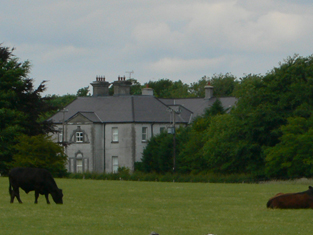
|
| Ballina | Occupied by Henry Blake at the time of Griffith's Valuation and by Martin J. Blake nephew of Martin Joseph Blake of Ballyglunin, Member of Parliament for the borough of Galway. Now a ruin. |
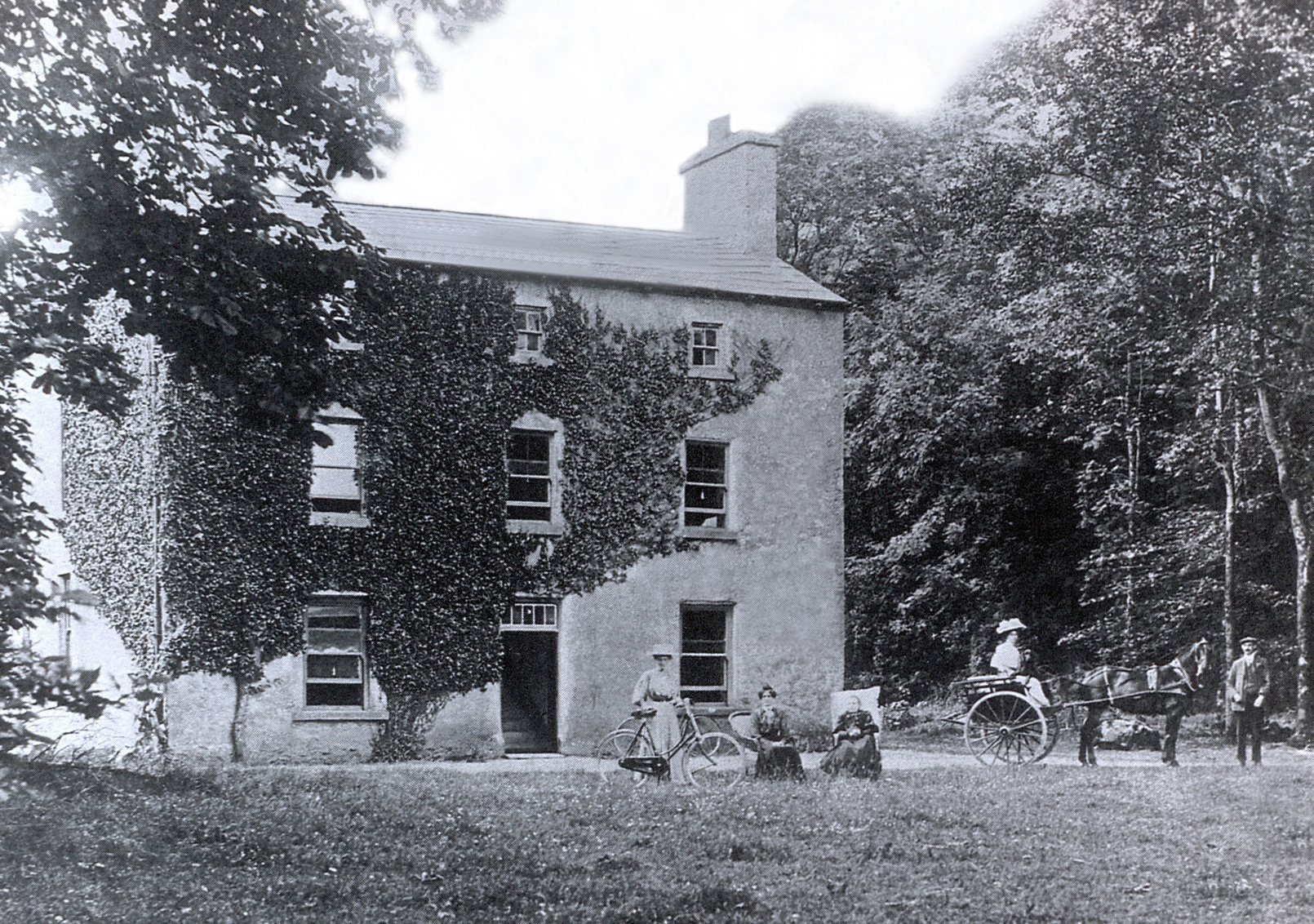
|
| Brooklodge | This property was leased to Christopher French by Ambrose Deane on 16 June 1775 for 1 life and 99 years. He built a house which later became a Blake residence held from the Skerretts, who had inherited it from the Deanes. It was occupied by Martin J. Blake at the time of Griffith's Valuation, when it was valued at £40. The house is now a ruin. |

|
| Corrofin Lodge | At the time of Griffith's Valuation held by Pierce Blake in fee. The house was valued at £16. Some ruins remain at the site. |
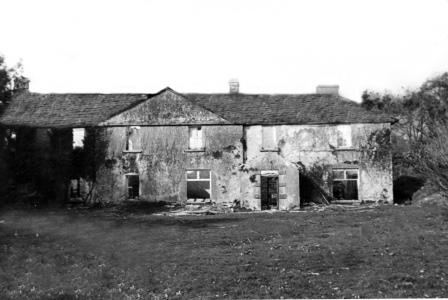
|
| Annagh | In 1786 Wilson refers to Annagh as the seat of Mr. Bodkin. It was held in fee by Robert Bodkin at the time of Griffith's Valuation when the buildings were valued at £25. Annagh was the seat of M. Bodkin in 1894. The original house is no longer extant but old and extensive farm buildings still remain as well as an occupied house built in 1967. |

|
| Ardskeamore | The original house was occupied by the Brownes in the 1830s. Charles Kelly was leasing from James Browne in the 1850s when the valuation of the house was £10. By the 1890s this had been replaced by the existing house (M437420) which was renovated in 2006. | |
| Winterfield House | Described in the 1830s as a neat 2 storied house, the home of Captain Butler. It was held in fee by John Butler at the time of Griffith's Valuation, when it was valued at £15. It is no longer extant. | |
| Culliagh North [Knockmoy Abbey] | Occupied by Robert Blake Forster leasing from Martin J. Blake, at the time of Griffith's Valuation when the house was valued at £10. It is still extant and occupied. Melvin notes that it was also known as Knockmoy Abbey. |
![Photo of Culliagh North [Knockmoy Abbey]](https://landedestates.ie/storage/img/orig/2494.jpg)
|
| Waterville/Cloonkeen | The residence of John Connis in 1814, of - Cunneys in 1837 and of Jane D. Coneys in the 1850s when it was valued at £10. . It is labelled on the 1st and 25-inch edition Ordnance Survey Maps as Cloonkeen. The property is now a ruin. | |
| Derrymaclaughna | A house appears to be located near the castle on the first Ordnance Survey map of 1838. The Ordnance Survey Name Books mention the ruins of a castle, a mansion house and a chapel in the townland. The property belonged to the Burke family in the 18th century as Wilson noted it as the seat of Mr. Burke in 1786. It became the residence of Thomas P. O'Flahertie of the Lemonfield family in the early 19th century. He was married to a daughter of Ulick Burke of Derrymaclaughna. At the time of Griffith's Valuation it was occupied by Thomas Cullinane who held it from James Browne. Derrymaclaughna was the residence of Alan Parker Close in the 1870s. In November 1887, Richard Rowland was offering for sale a quarter share of the lands at Errew, county Mayo, as well as lands at Derrymacloughna, barony of Clare, county Galway, in the Land Judges' Court. However, due to absence of bidding, the sale was adjourned. |

|
| Cregg Castle | Built in the mid 17th century, the home of the Kirwans until the early 19th century. In 1786 Wilson mentions that it was the last castle to be built in county Galway and that it had lately been remodelled by Mr. Kirwan. Later occupied by a branch of the Blake family. It was held in fee by Francis Blake at the time of Griffith's Valuation, when it was valued at £40. Slater notes it as the residence of Mrs. Blake in 1894. Sold by the Blakes in 1947 to the Johnstons, who made alterations and restored it. Bought by the Murrays in the early 1970s, who ran it as a guest house. Sold again in 2006. |

|
| Baunmore | Held in fee by Richard Kirwan at the time of Griffith's Valuation when it was valued at £7. The house was extended and enlarged towards the end of the nineteenth century. It as well as yard buildings, gates and walls still remain. |

|
| Prospect House | John Donnellan was leasing this property from the Kirwan estate at the time of Griffith's Valuation when it was valued at £4. It is labelled Prospect House on the 25-inch Ordnance Map of the 1890s. Occupied until 1977, now used for storage. |

|
| Castle Lambert | Castle Lambert was built in the later 18th century. At the time of Griffith's Valuation it was owned by Walter Lambert and was valued at £20. It is no longer extant, only the bell tower in the yard remains. |

|
| Moor Park | Occupied by Giles Eyre Lambert at the time of Griffith's Valuation when he was leasing it from Walter Lambert. It was valued at £20. Later the seat of Frank Shawe Taylor who was assassinated nearby in 1920. There is still a large house at Moor Park though the National Inventory of Architectural Heritage indicates that this is not the original house. |
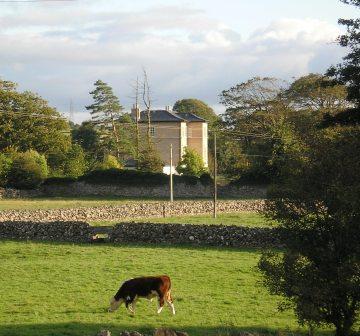
|
| Waterdale | This was originally a Staunton property which passed by marriage to the Lamberts. In 1786 Wilson refers to it as the seat of Mr. Staunton. The OS Name Books record it as the property of James Blake in the 1830s. Sold to Lord Clanmorris briefly in the 1850s and repurchased by James Staunton Lambert, Waterdale was leased to John Wilson Lynch 1857-1870 and to James Delahunt 1870-1883. It was taken over by the Land Commission in 1903 and demolished. |

|
| Ballybanagher | A Nolan family home, now a ruin. It was held in fee by Andrew Nolan at the time of Griffith's Valuation when it was valued at £12. In 1894 Slater recorded it as the seat of Christopher R. Browne. |

|
| Ballinderry | The house was burnt in the early 1920s and nothing remains except the farm buildings, which are accessed through a stone archway dated 1843. Recorded as the seat of John Phillip Nolan, M.P.in 1894. |

|
| Newford | In 1786, Wilson mentions Newford as the seat of Edward Browne. In 1814 Thomas Tighe is recorded as residing at Newford. Patrick Fitzpatrick of Newford House, Athenry is listed as a subscriber to ''Lewis' Topographical Dictionary'' (1837). The house was later part of the Whaley and Perry estates in the 1850s and was offered for sale in the Encumbered Estates court in 1852. Portion of Newford later bacame incorporated into Mellows Agricultural College farm. The house is no longer extant. | |
| Prospect | Prospect Lodge is recorded as the residence of T. Burke in 1814. At the time of Griffith's Valuation it was leased by Thomas Courtney to John Lopdell. It is still extant and occupied. |
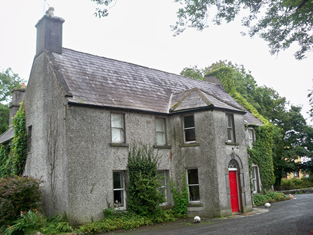
|
| Castleturvin | Francis Bruen was leasing Castleturvin to Reverend Mark Perrin at the time of Griffith's Valuation. The Ordnance Survey Name Books claim that the Turvin family were the proprietors in the 1830s. Castleturvin House is still extant and occupied. The entrance gate indicates that the house dates from 1767. |

|
| St. John's | This house was built later in the nineteenth century. It appears as "St. John's" on the 25-inch Ordnance Survey Map of the 1890s. The Corbishley family occupied St. John's until the early twentieth century when an auction was held on the premises. The property was purchased by the Finn family but members of the Corbishley family remained living in the house for some years afterwards. St. John's remained the property of the Finn family until later in the twentieth century. In 2005 it was sold. Extensive works have since been carried out at the entrance including new gates and railings. | |
| Cullairbaun | Occupied by James Perry at the time of Griffith's Valuation. | |
| Athenry House | Athenry House was built in the late 18th century. In 1837 it was the seat of J. Lopdell. It was offered for sale in the Landed Estates court in November 1876 as part of the estate of Wm. Vesey Fitzgerald Hickman. Part of the original house is no longer extant and construction work has taken place in the area. |
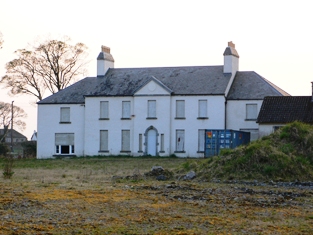
|
| Willmount | Willmount House leased by Thomas Mahon from William Smith at the time of Griffith's Valuation when it was valued at £10. In the 1870s Henry Morgan, who owned over 200 acres in county Galway, was residing at Willmount. In 1906 it was the property of John McCoy. The original house appears not to have survived though there is evidence of a farm yard and walled garden close to Willmount Graveyard. Extensive modern farm buildings exist on the site. | |
| Raford | The National Inventory of Architectural Heritage suggests that Raford House was built c.1760. Wilson refers to it as the seat of Captain Daly in 1786. It was being leased by Denis Bodkin from Harriett Daly at the time of Griffith's Valuation, when it was valued at £40. John Archer Daly was the owner of Raford House in 1906 when it was also valued at £40. Raford is still extant and occupied. Modern development has taken place on part of the demesne lands. |

|
| Turoe | Wilson refers to "Tourow" as the seat of Mr. Dolpin in 1786. Oliver Dolphin owned Turoe at the time of Griffith's Valuation when it was valued at £20. Slater refers to it as the seat of Miss Dolphin in 1894. In 1906 the mansion at Turoe was the property of Hubert Dolphin and was valued at £16. The original house is no longer extant but evidence of the stable yard and walled garden can be seen at the site, close to Turoe Pet Farm. |
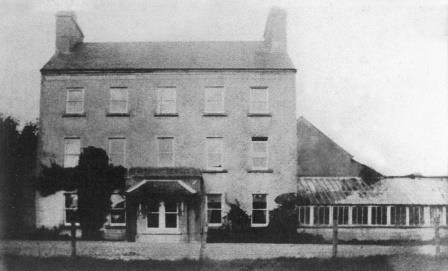
|
| Rockwood | John Galway is recorded as the owner of Rockwood at the time of Griffith's Valuation when it was valued at £20. In 1906 Rockwood House was owned by Robert W. Holmes and valued at £20. It was occupied by the Holmes family until after WWI. It was later the property of the Fox family. It was restored in the mid-1980s and is now extant and occupied. |

|
| Rocklawn | The OS Name Books give the name of this house as Rockland and state that it was the residence of the Browne family though they claim that the townland of Pollaghrevagh was the property of Lord Clanmorris. At the time of Griffith's Valuation it was occupied by James French and was valued at £12. By 1906 it was owned by Richard French. Rocklawn House is no longer extant. It is described as "in ruins" on the 1933 printing of the 6" OS sheet for Galway. |

|
| Carnmore | The OS Name Books record Mr. Blake of county Mayo as the proprietor of Carnmore in the 1830s. At the time of Griffith's Valuation Valentine O'Connor Blake was leasing a house valued at £4 and over 100 acres to Arthur Veitch. Some ruins remain at the site. | |
| Lydacan | Lydacan or Lydican Castle was a residence of the Lynch family in the 1770s. The OS Name Books record the "substantial residence of Mr. Gunning" in Lydacan in the 1830s. Lydacan Castle was purchased by Martin O'Flaherty in the mid-19th century and was subsequently sold by him to James Greated. It was burnt in 1922 and the ruins remain. |

|
| Thornpark | At the time of Griffith's Valuation the property at Carrowmoneash, parish of Oranmore, was leased by the representatives of H. Butler to Anne Butler/K.H. Blake. Burke's Landed Gentry (1958) states that Xaverius Henry Blake Butler purchased Thornpark, part of his mother's dowry, in the Landed Estates' Court in April 1860. Sir Henry Blackall states that Xaverius Blake Butler bought Mount Vernon, which he renamed Thornpark, from his nephew Henry.By 1906 the house at Carrowmoneash was owned by James Blake Butler and was valued at £26. Thornpark House is now the Oranmore Lodge Hotel. See www.oranmorelodge.ie for more information. |

|
| Frenchfort | Frenchfort became a Blake property in 1780 when Michael Blake married Anne Ffrench of Frenchfort. Wilson mentions the house as his seat in 1786. He is described as a resident proprietor in 1824. At the time of Griffith's Valuation the house at Frenchfort in the parish of Oranmore was occupied by his grandson, Theobald Blake. The original house does not appear to be present now but the walled garden layout is still visible. |
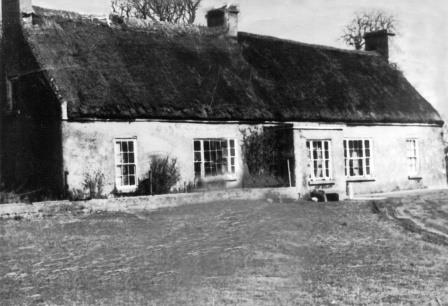
|
| Oranbeg | At the time of Griffith's Valuation the property at Oranbeg was leased by the Fitzgerald Vesey estate to George Hill and valued at £8. It is labelled Vesey Lodge on the 25-inch Ordnance Survey map of the 1890s. It is no longer extant. | |
| Rocklands (Oranmore) | Rocklands was occupied by George Ingham in the 1850s when it was valued at £13. In 1906 it is recorded as the property of Isabella Ussher and was still valued at £13. The house is still extant and occupied. |
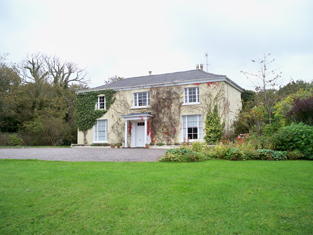
|
| Oran Castle | In 1786 Wilson mentions Oranmore as the seat of Denis Blake. In 1814 and again in 1837 Oranmore Castle is recorded as the seat of Walter Blake. At the time of Griffith's Valuation he was leasing a property, valued at £10, in Oranmore townland, to Martin Grady. Pádraig Lane writes that Walter Blake sold Oran Castle to James Dillon Meldon. The castle was refurbished by the King family in the twentieth century. |

|
| Rockmore or Blakeland Lodge | . This property is named as Blakeland Lodge on the 1st edition OS Map and in the Ordnance Survey Name Books.It appears as Rockmore on the 25-inch map of the 1890s. At the time of Griffith's Valuation it was occupied by William Kelly and valued at £15. In 1906 it was the property of Raymond Kelly and was still valued at £15. It is still extant and has recently been renovated. |
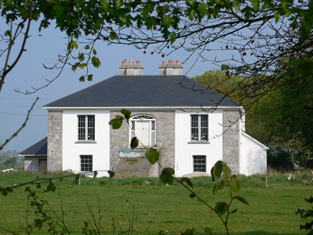
|
| Tallyho Lodge | Tallyho Lodge was the home of Burton Persse, Sen, in the 19th century. The house is no longer extant but traces of the walled garden remain. |

|
| Moyne | Built in the first half of the 19th century by Michael J. Browne who was forced to sell his estate in the mid 1850s when the house was described as ‘a magnificent pile of Grecian architecture of the Doric order’. John Stratford Kirwan bought the house and demesne in 1857 from Edward Browne who had purchased it in 1855. Kirwan advertised it for sale again in 1865. It was eventually sold to the Waithmans who later purchased Merlin Park. In 1912 the house became a hospice for infirm priests and in the 1930s was taken over by the Sacred Heart Missionaries. Since 1972 it has been the home of a number of people, including the broadcaster and poet George MacBeth and the singer Donovan. A floor plan and lithographs of the house are included in the various sale rentals. |

|
| Crumlin | Built in 1844, the original house was held in fee by Peter Blake and valued at 7 at the time of Griffith's Valuation. It was later altered and extended by Cecil Henry in the style of a French chateau. The house was sold to the Land Commission in 1913 and to John Costello in 1917, whose grandson renovated it and the courtyard in the early 1990s. |
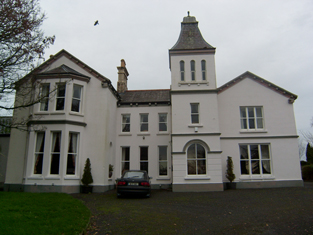
|
| Killimer Castle | Originally a tower house, Killimor Castle was modernised in the early 1700s by the addition of two slated wings. The Dalys continued to reside there until the end of the 18th century when the castle and demesne were leased to Dominick Burke of Slatefield. In 1837 Lewis records it as the seat of Hyacinth Burke. Dominick J. Burke was still leasing the house at Killimor from Rev. Nicholas Devereux at the time of Griffith's Valuation. It was then valued at £16. The house at Killimordaly had fallen into disrepair but has been restored. |

|
| Corrandoo House | This property was granted to the ffrenches in the late 17th century in lieu of Monivea Occupied by the Reverend Mr Marsh in the 1770s sand 1780s, by M. Dowdall in the 1830s and Thomas Kenny at the time of Griffith's Valuation when it was valued at £10. It is no longer extant. |

|
| Glennagloughaun North | A building valued at £12 was occupied by Digby French at the time of Griffith's Valuation, this may have been the old charter school marked on the first Ordnance Survey map. The latter building appears to have fallen into disuse by the 1890s and the site is now occupied by a farm supply stores. | |
| Windfield | Originally a Blake house, Wilson refers to it as the seat of Mr. Blake in 1786. It was sold to the Jameson family in the early 1820s and occupied by J. Lynch in the late 1830s. Catherine Lynch was leasing the property at the time of Griffith's Valuation, when it was valued at £30. The house was burnt in 1921 and nothing remains now. |
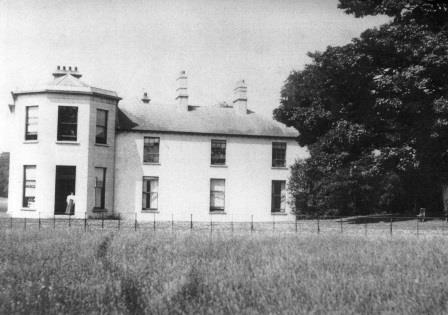
|
| Newtown | The home of the Kelly family in the 19th century, sold to Major Frederick Carr in the early 1930s and sold again in the late 1960s. The house has had a number of owners in the intervening years and is well maintained. It was offered for sale in 2007. |
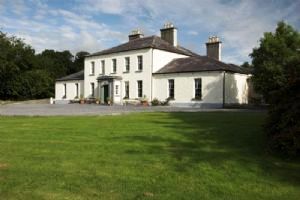
|
| Farmhill | Joseph Kelly was leasing a property valued at almost £10 from Charles Kelly at Farmhill, barony of Tiaquin, at the time of Griffith's Valuation. A house still exists at this site. | |
| Killaclogher House/Spring Park | This property is labelled Spring Park on the First edition Ordnance Survey map and as Killaclogher House on the 25-inch edition of the 1890s. It was the main home of the Kenney family in the 18th and 19th centuries. At the time of Griffith's Valuation it was valued at over £16 and held in fee by James C. Kenny. The house is no longer extant. |

|
| Ryehill | Ryehill House was built in the early part of the 19th century and was still occupied in 1906 by a member of the Roche family. Unroofed in the mid 1950s only the impressive gateway and yard buildings still remain. |

|
| Belleville | Built in the late 18th and early 19th century. Belleville was held in fee by Thomas Mahon at the time of Griffith's Valuation when it was valued at £30. The only part of the house remaining is the tower. |
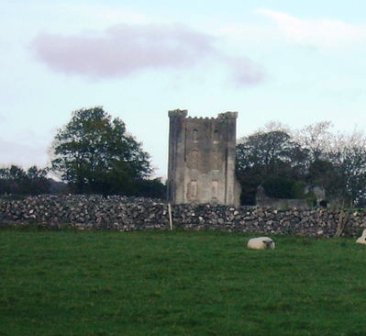
|
| Bingarra | Occupied by James Clarke in the mid 1850s, leasing from the Bodkin estate and advertised for sale in Nov 1855. Modern buildings exist at the site now. | |
| Temple | This property is labelled Temple House on the 25-inch Ordnance Survey map having been built after the publicaiton of the 1st edition maps. In the 1850s William Poole was leasing the property from the Graves estate when the buildings were valued at £10. Substantial ruins still exist at the site. |

|
| Colmanstown | Originally a French property which became a Quaker settlement. Griffith's Valuation describes the buildings as a herd's and steward's house occupied by Edward Barrington and partners and then valued at £30. Buildings on both sides of the road mark the site of Colmanstown. Only the walls remain of some of these buildings, others are still in use. |

|
| Attymon House | At the time of Griffith's Valuation this house was occupied by Mary Broderick, who later married Lord Dunsandle. It was then valued at £8. In 2008 the current house at this site was offered for sale. The sale details state that it was originally built as a hunting lodge but later extended. See Irish Times 22 May 2008. |

|
| Tiaquin | At the time of the Burke sale in 1851 the house was described as an 'old fashioned cottage style' type of building. A gable end of the house still stands with the nearby farm buildings still in use. |

|
| Knockbrack | A house built in the early 1850s by the Hall family and occupied by them until 1922. In 1906 it was valued at £36. The roof of the house was later removed. Only the outline of the basement walls now remain. The farmyard buildings are still used by the Feeney family. |

|
| Kilskeagh | Leet's Directory records Dominick Browne of Kilskeagh in 1814 and a small house is marked on the 1838 Ordnance Survey map. By the time of Griffith's Valuation only a herd's house valued at 10 shillings is recorded. | |
| Ardskeabeg | A property in the possession of the trustees of Dominick Skerrett at the time of Griffith's Valuation. Occupied by the Kelly family in the later 19th century and by their descendants the Canavans until 2000. The house is still extant but no longer lived in. |

|
| Carnakelly | Carnakelly was the original house from whch the Dalys of Dunsandle descended. John Monaghan was leasing this house, valued at £4 together with over 100 acres, from Lord Dunsandle's estate, at the time of Griffith's Valuation. |

|
| Graig Abbey | At the time of Griffith's Valuation, James Clarke was leasing the house at Graig Abbey from the Warburton estate when it was valued at £18. It is still extant and in use. |
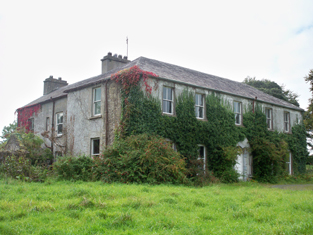
|
| Coolaran | Sometimes spelt Coolarne. At the time of Griffith's Valuation, the Meldon estate owned a herd's house at Coolarne. Later the property became a convent of the Sisters of the Sacred Heart. It is now an addiction treatment centre. |
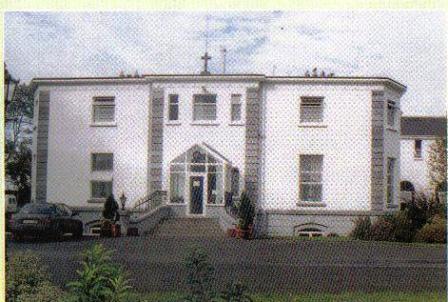
|
| St. Michael's/ Moneyteige | The house at St. Michael's is described in the Landed Estates court notice in April 1885 as "a handsome modern residence which cost £2000 to build". At the time of Griffith's Valuation, Edmund Davies held the townland of Moneyteige including a house valued at £2. Writing in 1976, Kelly noted that the house was built by a doctor named Davis, who bought the townland from the Lamberts of Castle Ellen. Part of the building is now roofless. | |
| Kiltullagh House | In 1786 Wilson mentions "Kiltolla" as the seat of Patrick D'Arcy. Lewis records Kiltullagh House as the seat of J. D'Arcy in 1837. At the time of Griffith's Valuation, Pierce Joyce held a herd's house here valued at almost £4. It is described as "in ruins" on the 25-inch Ordnance Survey map of the 1890s and these ruins are still extant. |

|
| Cloonacauneen Castle | Muriel L. Athy writes that the castle was occupied by Martin Blake in 1835, although it is recorded in the Ordnance Survey Name Books as the property of Mr. French. The property later passed into the hands of Mr Fair "who built against it a Tudor house", his descendant Dr Fair of Ballinasloe sold it to the Estates Commissioners". Owned by James Malley in the early 20th century. Described by Bence Jones as a tower house with an attached wing. Still occupied, it now operates as a bar and restaurant. |

|
| Clogherboy Cottage | David Rutledge was leasing a house valued at over £8 to James Kealy at Clogerboy, barony of Clare, at the time of Griffith's Valuation. The house was later known as Cahergal. There is still a building extant at this site. |
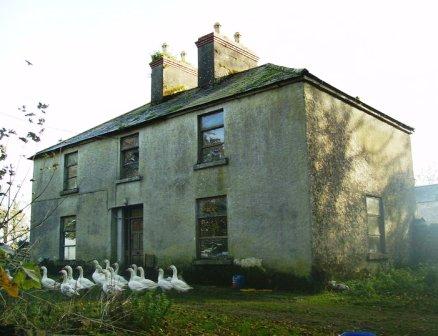
|
| Rockhill House | The earlier house at Rockhill was the residence of Daniel Higgins in 1814. At the time of Griffith's Valuation, it was occupied by Dominick D'Arcy and was valued at £9. A new house appears to have been built in the latter half of the nineteenth century and, in the 1870s, it was the seat of Lionel D'Arcy. Rockhill is stil extand and well-maintained. |
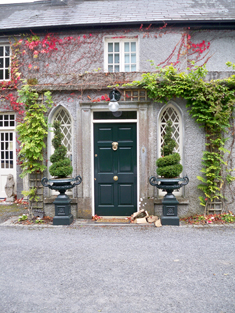
|
| Raheen (Athenry) | Raheen House is associated wth the Lopdell family although there was only a herd's house valued at £3 and gate lodges recorded there at the time of Griffith's Valuation. In 1894, however, Slater noted it as the residence of Mrs. Lopdell. Raheen is still extant. |
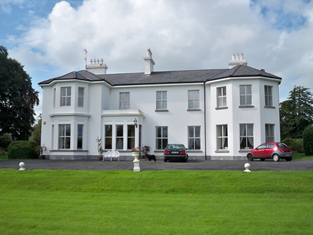
|
| Carrowroe House | In 1786, Wilson refers to "Carrorowe, at present uninhabited". At the time of Griffith's Valuation, John Dennis was leasing a property at Carrowroe North, barony of Athenry, valued at £15, from Lord Dunsandle's estate. Buildings remain at the site. |

|
| Killeen House & Killeen Castle (Oranmore) | In 1814 Killeen Castle is recorded as the home of Marcus Blake. By the time of Griffith's Valuation it was used by the Cullinane family who lived at Killeen House nearby. The latter property was valued at £10 at the time of Griffith's Valuation. The castle and its adjacent buildings afterwards fell into ruin but was restored in the later twentieth century and is now occupied once again. Killeen House was demolished in the twentieth century. | |
| Boyhill House | Richard Persse was leasing a house valued at £5 from Burton Persse at Boyhill, barony of Athenry at the time of Griffith's Valuation. In 1906 it was still the property of Burton Persse who also held almost 300 acres of untenanted land in the locality. Some ruins and farm buildings still remain at the site. | |
| Gloves (Athenry) | The Ordnance Survey Name Books record Gloves as the residence of Mr. Browne in the 1830s. At the time of Griffith's Valuation Mark Loughnane held the townland of Gloves Middle, barony of Athenry including buildings valued at almost £8. By 1906 Michael J. Monaghan was the owner of this property. Buildings are still extant at the site. | |
| Gortakeeran | John A. Daly owned buildings valued at almost £8 at Gortakeeran in 1906. At the time of Griffith's Valuation this townland was owned by John B. Daly including a herd's house valued at 15s. | |
| Mulpit House | Mulpit House is shown on the first edition Ordnance Survey map, published in 1842. At the time of Griffith's Valuation, it was being leased from Francis Bruen by Walter Taylor and was valued at £8 10s. The property included a corn mill though this is noted as "in ruins" on the Ordnance Survey map. Mulpit House is still extant and occupied. |
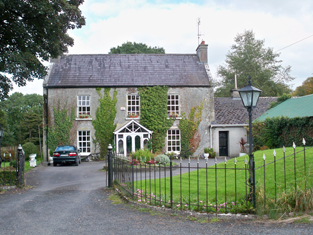
|
| Esker | In 1786 Wilson refers to Esker as the seat of Mr. Daly, "situated on a lofty hill". By the time of Griffith's Valuation this property was being leased to the Dominican Order by Lord Dunsandle, when it was valued at £20. The Dominicans departed in the 1860s and it became for some time a seminary for the RC diocese of Clonfert. It was taken over by the Redemptorist Order in 1901, in whose possession it still remains. It now serves as a retreat centre. |
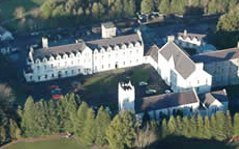
|
| Park | In 1786 Wilson refers to Park as the seat of Mr. Burke, half a mile from the Monivea-Galway road. This may refer to Park townland in the barony of Athenry, which was in the possession of James Perry at the time of Griffith's Valuation. | |
| Cossaun or Cussane | In 1786 Wilson refers to Cussane as the seat of Mr. Parker. By the time of the 1st Ordnance Survey the house in Cossaun townland is described as "in ruins". The townland was in the possession of the Mahons of Belleville by the time of Griffith's Valuation in the 1850s. | |
| Claregalway Castle | In 1786 Wilson refers to "the ancient castle of Clare-Galway, the seat of Michael French". Both the 1st edition and 25-inch edition indicate that the original tower house was in ruins but extensive adjacent buildings are shown on the 25-inch map. At the time of Griffith's Valuation, it was part of Lord Clanmorris's estate and was leased to Patrick Reilly when the buildings were valued at over £5. The castle is still extant and undergoing a programme of renovation. | |
| Corbally House (Kilmoylan) | In 1786 Wilson refers to Corbally, the seat of Mr. D'Arcy, situated beside a lough. This would appear to be Corbally House, in the parish of Kilmoylan. By the time of Griffith's Valuation, the townland was in the possession of James O'Hara and Walter Blake was occupying this property which was valued at £2. It is no longer extant. |

